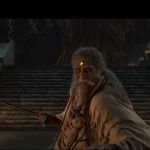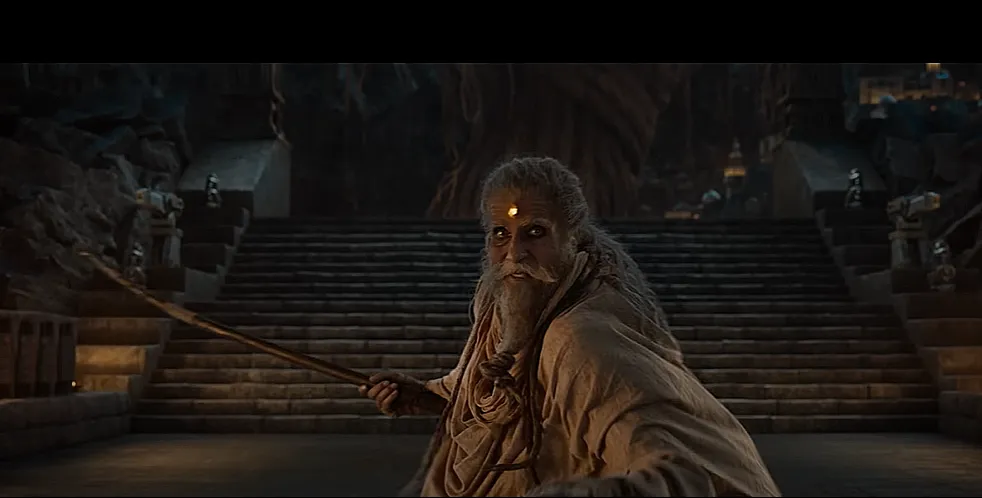Introduction
Overview of the book Dry by Neal Shusterman and Jarrod Shusterman
- Title: Dry
- Authors: Neal Shusterman and Jarrod Shusterman
- Genre: Young Adult, Survival Novel, Thriller, Dystopian Fiction, Science Fiction
- Publication Year: 2018
- Summary: The novel follows the harrowing journey of a group of teenagers as they navigate a catastrophic drought in California, known as the Tap-Out. As society crumbles and water becomes more precious than gold, the protagonists Alyssa, Kelton, and their friends must make life-and-death decisions to survive.
- Themes: Dry probes themes like survival, ethics in crisis, environmental responsibility, and the fragility of societal structures.
- Characters: The story centers around strong-willed Alyssa, survival-trained Kelton, smart and resourceful Jacqui, and determined Henry, each bringing their perspectives to the narrative.
- Neal Shusterman: A prolific author of young adult fiction known for engaging and thought-provoking narratives, including the Unwind dystology and the Arc of a Scythe series.
- Jarrod Shusterman: Neal’s son, collaborator on ‘Dry’, and an emerging talent in writing with a fresh voice that lends depth to the characters and the story.
The father-son duo brings together their tales of imagined scenarios, expertly tapping into the anxieties and fascinations of a world where everyday resources become scarce.
With ‘Dry’, they offer a chilling look at what might happen if society was deprived of water, a vital resource often taken for granted, framing this message within a thrilling plot that keeps readers invested from start to finish.
Plot Summary
Synopsis of the California drought escalating to catastrophic proportions
In ‘Dry’, the state of California faces an unprecedented crisis: the Tap-Out. This catastrophic drought has pushed society to the brink as the shortage of water leads to chaos and desperation.
The government’s inability to provide solutions exacerbates the situation, leading to public unrest and a rapid breakdown of civil order.
As the drought worsens, the landscape of California transforms into a parched wasteland, setting a stark backdrop for the unfolding narrative.
Overview of the protagonist’s struggle for survival and decision-making
Within this environmental disaster, the main characters are thrust into a survivalist saga. Alyssa, a typical suburban teenager, initially unaware of the severity of the drought, quickly realizes the gravity of the crisis as her neighborhood deteriorates.
With her parents missing, she must step up to ensure her younger brother’s survival.
Conversely, Kelton, raised by a family who anticipated such societal collapse, finds his extensive survival knowledge tested in ways he never imagined. His neighbor Alyssa, once just a schoolmate, becomes an ally as they join forces to navigate the dangers.
The characters encounter moral dilemmas and the darker sides of humanity, with each choice carrying weighty consequences. As commodities like water become a luxury, trust among people disintegrates, transforming friends into foes and turning every interaction into a potential threat.
Every decision is a battle between self-preservation and empathy, testing the bounds of their morality. Alongside their companions, headstrong Jacqui and cunning Henry, they traverse this arid new world, facing obstacles that question not just their ability to survive, but also what it means to be human in a world that has lost its humanity.
Main Characters
Introduction to the key characters in Dry
The novel ‘Dry’ introduces a cast of characters, each with unique backgrounds and perspectives, forced to confront the new harsh realities of life without water:
Alyssa: The novel’s central character, a high school student whose normal life is upended by the Tap-Out. She becomes a leader and protector for her younger brother as they face the dire circumstances.
Keltonstrong: Alyssa’s survivalist neighbor. Kelton has been prepared for disaster scenarios by his family, but the harsh realities of the drought test his skills and resilience in unexpected ways.
Garrettstrong: Alyssa’s younger brother, who depends on her for survival. His innocence highlights the novel’s focus on familial bonds and the lengths to which one would go to protect loved ones.
Jacquistrong: A strong-willed companion who joins Alyssa and Kelton. Her resourcefulness and toughness prove to be valuable assets to the group’s survival efforts.
Henrystrong: Another character vying for resources in a desolate California. Henry’s decisions underscore the ethical challenges and personal conflicts arising in desperate times
Themes and Symbolism
Exploration of major themes such as survival, family, and resource scarcity
In Neal Shusterman’s “Dry,” the exploration of survival is at the forefront, depicted through the harrowing experiences of the characters as a catastrophic drought, known as the Tap-Out, hits California.
The novel presents a visceral depiction of society’s descent into chaos, poking at the fabric of civilization when common resources become scarce. Family also emerges as a crucial theme—relationships are tested and fortified as the characters face life-and-death challenges.
Shusterman uses the drought as a pressure cooker to examine the strength and elasticity of familial bonds, particularly through the dynamic between Alyssa and her younger brother Garrett.
Resource scarcity acts as a catalyst for the plot and serves as a broader commentary on environmental concerns and sustainability. As the characters navigate the new landscape of scarcity, they encounter the complex interplay between human desperation and resilience.
This thematic exploration forces readers to confront the uncomfortable question of what people are capable of when pushed to their limits by extreme resource shortages
Discussion of symbolic elements used in the novel
Symbolism in “Dry” is heavily intertwined with its themes. Water, or the lack thereof, represents life’s precariousness and the fragility of societal order—thirst becomes a relentless antagonist that strips away the veneer of normalcy.
The characters’ dynamic developments further showcase symbolism in their evolution. Alyssa’s transformation signifies adaptability and the embrace of unexpected leadership, whereas Kelton’s struggle reflects the notion that preparation for disaster may not fully encompass the complexities of reality.
Jacqui and Henry symbolize the two sides of survival, resilience, and moral ambiguity, respectively.
Each character embodies a stance on morality and survival instinct, challenging readers to reflect on ethical boundaries during crises.
Writing Style and Narrative
Examination of the writing style employed by Neal Shusterman and Jarrod Shusterman
Neal Shusterman and Jarrod Shusterman utilize a third-person point of view in “Dry,” which allows them to explore the perspectives of multiple characters with depth and objectivity.
The storytelling unfolds through a lucid, transparent prose that maintains a straightforward tone. This no-nonsense style is instrumental as it aligns well with the book‘s intense storyline of a world running out of water, where every drop counts, and every action could mean the difference between life and death.
The writing style of “Dry” is characterized by its directness and clarity, which ensures that the readers remain engaged without being overwhelmed by stylistic complexities.
The language throughout the novel adheres to this approach, with concise and vivid descriptions that construct a palpable sense of urgency and desperation.
This is especially evident in the novel’s portrayal of societal breakdown and the characters’ psychological turmoil in the face of an unprecedented crisis.
Analysis of the narrative techniques used to engage readers
To engage readers fully, “Dry” employs a diverse set of narrative techniques that add depth to the unfolding calamity. The multiple points of view provide a panoramic view of the catastrophe, allowing readers to see the enormity of the crisis through different lenses.
Such an approach also solicits empathy and broader understanding of how individuals with varying backgrounds and values respond to the same dire situation.
The Shustermans use short, punchy chapters to keep the pace brisk and maintain tension. This choice in narrative structure propels the story forward rapidly, reflecting the fleeting nature of time and resources in the parched setting of the novel.
Conflict is another key technique, both in terms of human versus nature and human versus human, offering not only a vehicle for plot progression but also for thematic exploration.
The authors deftly balance these elements, resulting in a narrative that is both compelling and thought-provoking.
Major Events and Turning Points
Breakdown of significant events and turning points in the story
In “Dry,” the story’s architecture is defined by several monumental events that each steer the narrative in new directions and heighten the overall tension. One of the pivotal moments is the sudden realization by the protagonists that the water crisis they are facing is not a short-term inconvenience but a potentially permanent state of affairs.
This shocking revelation marks a significant turning point and sets the tone for the survivalist theme that pervades the novel.
Another crucial event is the introduction of the survivalist character, who brings a new layer of intensity to the plot. His knowledge and preparation contrast sharply with the unpreparedness of other characters, making his role a catalyst for both conflict and potential cooperation.
The contrasting survival strategies employed by the characters exemplify the varied human responses to crisis and scarcity.
As society crumbles, an encounter with opportunists exploiting the water shortage for profit becomes an eye-opening experience for the protagonists.
This encounter not only adds to the external conflict but also forces the characters to confront the moral quandaries posed by survival. Their reactions to this immorality serve to further the character arcs, providing insight into their evolving worldviews.
Impact of these events on the plot and character development
The critical events in “Dry” serve as more than mere plot devices; they have profound implications for the development of characters as well.
The dwindling water supply and resultant chaos instigate a metamorphosis in the main characters, compelling them to make life-altering choices and to grow in unforeseen ways.
Relationship dynamics are also profoundly affected by these turning points. The intense pressure of their situation forces characters to reassess their relationships with one another, forging unexpected alliances and unraveling old ties.
Characters are pushed to their limits, exposing their true nature and testing the strength and integrity of their connections to one another.
The crucial turning points in the story thus do more than advance the narrative; they are instrumental in shaping the fabric of its characters and in driving home the core themes of survival, morality, and human resilience in “Dry.”
Critical Reception
Overview of the critical reception and reviews of Dry
The novel “Dry” by Neal Shusterman and Jarrod Shusterman has generated a considerable amount of attention and feedback from the literary community since its release. Critics have applauded the book for its provocative premise, which thrusts readers into a frenetic world where the most basic of human needs, water, becomes a dire luxury.
The ingenuity in the narrative construction and the emotional intensity are frequently cited as strengths of the work, capturing not just the imagination of readers but also their deepest anxieties over resource scarcity and societal breakdown.
Furthermore, “Dry” has been praised for its complex character development and the compelling depiction of the characters’ psychological and ethical struggles in the face of an unprecedented crisis.
Analysis of both positive and negative feedback
While many readers and critics have celebrated “Dry” for its unsettling mirror to reality and engrossing plot, the novel is not without its detractors. Some have critiqued the story’s pacing, finding it uneven at points, which they believe detract from the narrative’s potential for sustained suspense.
Others have pointed out that, despite the chilling premise, certain elements of the story veer towards the predictable, lessening the overall impact of the twist and turns the authors attempt to deploy.
In terms of character interaction, a few reviewers argue that not all relationships are fully fleshed out, leading to a sense of missed opportunities in character dynamics.
Nevertheless, these critiques are often accompanied by acknowledgments of the novel’s ability to elicit strong reactions and stimulate discussion regarding real-life vulnerabilities of human societies—a testament to the book’s resonance with contemporary concerns.
Impact and Significance
Neal Shusterman and Jarrod Shusterman’s “Dry” is a distressing exploration of society’s potential collapse in the face of an environmental catastrophe.
The stark portrayal of water scarcity strikes a chord with global concerns over depleting natural resources and poses unsettling questions about the fragility of social order.
The narrative delves into the desperation that emerges when a critical resource becomes unavailable, thus bringing to light the vital importance of water management and conservation efforts in today’s world.
The novel’s depiction of chaos and conflict over water access also casts shadows of existing tensions in regions where water rights are contested. Through its fictional lens, “Dry” underscores the consequences of environmental neglect and amplifies conversations about sustainable living and climate change resilience.
Consideration of the book’s relevance to real-world issues
“Dry” resonates with pressing contemporary issues, serving as both a cautionary tale and a rallying cry for action.
The authors’ portrayal of environmental degradation and societal disintegration is not just hypothetical—it reflects ongoing struggles against drought and water scarcity in various parts of the globe.
By crafting a story that echoes the plights of communities currently experiencing these crises, the book highlights the urgency for collective awareness and action on water security. Furthermore, it prompts reflection on personal responsibility and the role of individuals in advocating for and contributing to sustainable practices.
As the book’s plot mirrors escalating environmental concerns, it substantiates an important dialogue focused on the intersection of human behavior, policy-making, and ecological stewardship.
“Dry” serves as a stark reminder that literature can play a critical role in illuminating and responding to the challenges of our times.
Conclusion
Summary and overall assessment of Dry by Neal Shusterman and Jarrod Shusterman
Neal and Jarrod Shusterman’s “Dry” is a compelling narrative that effectively captures the intensity and panic of a dystopian scenario precipitated by acute water scarcity.
It provides a gripping account of how a group of teenagers navigates this harrowing situation, underlining the immediacy and impact of environmental crisis. This work is an insightful amalgamation of dystopian fiction, thriller, and science fiction genres tailored for middle to early high school readers.
As the story unfolds, it offers a sharp assessment of human behavior under stress, societal breakdown, and resource conflicts – issues that are increasingly relevant in today’s context of climate change.
The comprehensive teaching guides and resources accompanying the novel, including discussion and quiz questions, enhance its educational value by promoting engagement and critical thinking among students.
The Shustermans succeed not only in crafting a page-turning tale but also in providing a poignant commentary on the necessity for environmental awareness and preparedness in an unpredictable world.
Personal reflection and recommendation for readers
The book earnestly taps into current anxieties about the future, making it an essential read for individuals concerned about environmental sustainability. By extrapolating the effects of water shortage, “Dry” conveys a realistic and horrifying vision of society’s potential unraveling.
The straightforward portrayal of characters grappling with moral dilemmas fosters empathy and introspection. This title is especially well-suited for young adults but carries profound messages that resonate with a broader audience.
It acts as both a cautionary tale and a source of motivation for proactive change. Readers looking for a narrative that combines suspense, social commentary, and pertinent environmental themes will find “Dry” by Neal and Jarrod Shusterman an impactful addition to their bookshelves.
Its ability to incite discussion makes it a commendable choice for book clubs and classrooms as well.





